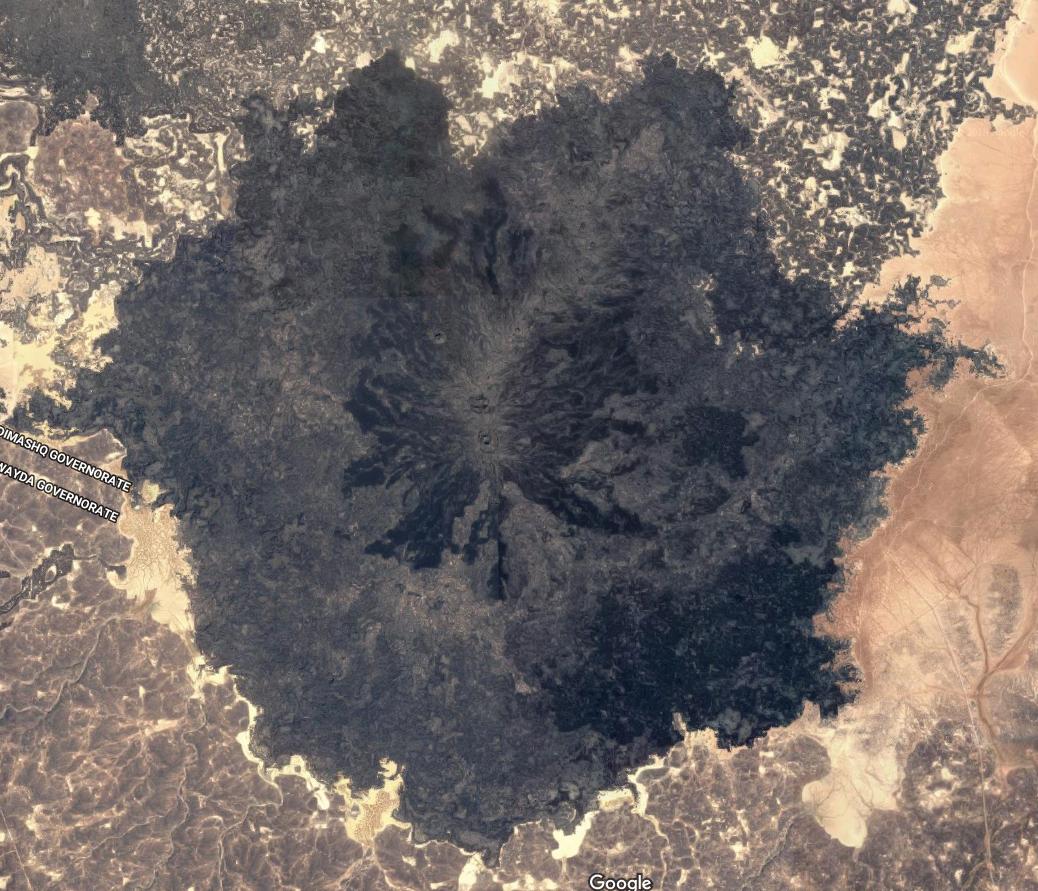On my random explorations of google maps, I came across this interesting terrain:
(link to map here)
Apparently, this is part of the so-called Hamad Plateau, in the Syrian desert. If so, the rock would be limestone, which I read is not directly related to volcanoes. But it just kind of look like it from above.
Anyone has some information on what this geological area is? I can find little about it, eve it even is the Hamad Plateau. I must say that I have zero knowledge of geology. Zooming in you see a lot of rock and desert, and not so much height variation, so maybe it's not a volcano. Still, it's interesting by the colour and shape. Any help is more than welcome!
